How Much Do You Know About Rolling Pins?
Wouldn’t you say this time of year is definitely rolling pin season? Pie crust, dinner rolls, and cookie dough—they all call for the indispensable rolling pin. How much do you know about this handy tool, though?
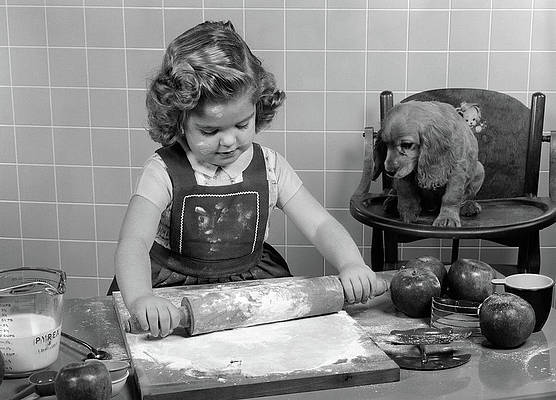
We all know it’s a “cylindrical food preparation utensil used to shape and flatten dough” (thank you Wikipedia!). Were you aware that there are four basic styles of rolling pin used most often? They’re made from different materials and have different purposes. Each has distinct advantages, as they are used for different cooking and baking tasks.
THE ROD. These tend to be on the thin side and typically made of wood. They’re most often around 1-2 inches in diameter. They’re used by rolling the rod across the dough using one's palm. The pins may be tapered at one or both ends for more pivot control in certain tasks such as making small jiaozi skins (dumpling wrappers) or pie shells. Most East Asian or French style rolling pins, and the Turkish Oklava are rod-style.

THE ROLLER. These consist of a thick heavy roller made of a variety of materials around 3-4 inches in diameter. They typically come with thinner handles which extend through the roller. They are used by grasping the handles and pushing the pin across the dough. Many Western rolling pins are roller types.
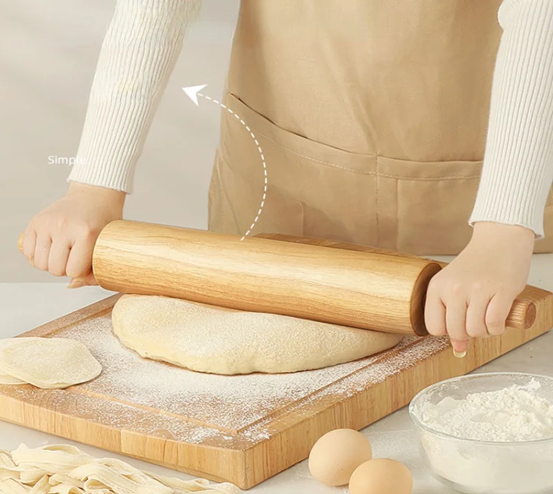
THE TEXTURED PIN. Textured pins are more specialized. Their texture marks and indents dough surfaces for special breads, pancakes, and cookies. Some even come embossed with writing. They usually are one solid piece and have handles.

THE CHAKLA BELAN. In Indian cuisine, the belan (meaning rolling pin) is used in combination with a chakla (flat circular rolling board). This is the tool for making chapatis. Chapti dough is rolled on the chakla with the help of the belan.
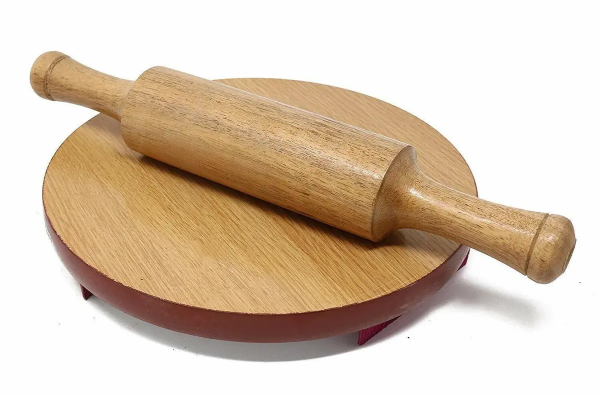
Today rolling pins come in a variety of sizes, shapes and materials. Besides wood, pins are made of glass, ceramic, acrylic, bakelite, copper, brass, aluminum, silicone, stainless steel, marble, and even plastic.
Some pins are hollow so they can be filled with ice water. And marble rolling pins are usually cooled in the refrigerator. Whether ice-filled or marble, these pins are the favorite for making puff pastry, because the dough needs to remain cold throughout the rolling process.
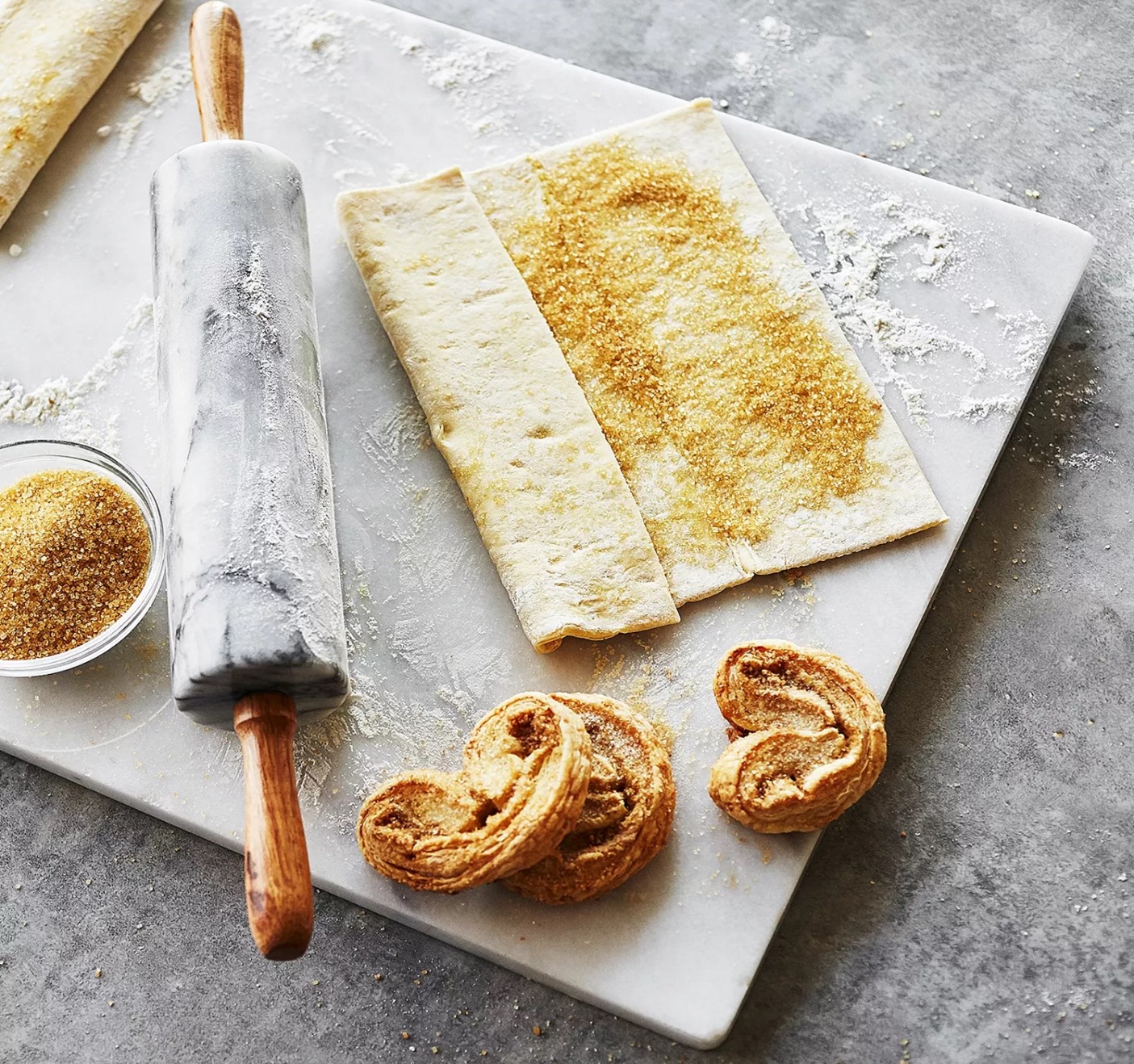
I’ll close by circling back to the wooden rolling pin. These babies need special care and keeping since wood is a natural material and will constantly shift as it gains or loses moisture with the seasons. It can even change shape over time. With proper care, it should last for decades; it may even darken and develop a beautiful patina with age.
So what IS “proper care?” According to Jim Underwood of Sawmill Creek Woodworking (www.sawmillcreek.org), here are the DOs and DON’Ts of wooden rolling pin care:
DO: Immediately hand wash after use with a damp rag; rinse, then towel and air dry. Occasionally recondition it with walnut or food-grade mineral oil.
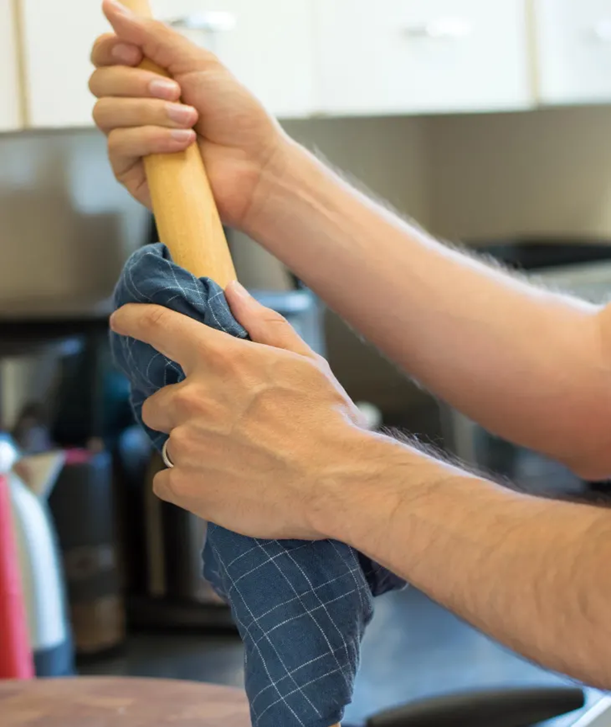
DON’T: Never soak it in water or put it in the dishwasher. Don’t put it in the microwave or oven (do people actually do that?). And since sudden changes in temperature and humidity can cause the rolling pin to crack, don’t leave it in a cold garage, and then situate it close to a heat source. Also, never leave a wooden rolling pin in a closed car during the summer.
Indispensable, and when well cared for, reliable. That’s the rolling pin for you. It’s such a treasured kitchen tool that it’s even handed down from mother to daughter. I have my mom’s, and you likely have your mom’s. Warms your heart, doesn’t it?

We all know it’s a “cylindrical food preparation utensil used to shape and flatten dough” (thank you Wikipedia!). Were you aware that there are four basic styles of rolling pin used most often? They’re made from different materials and have different purposes. Each has distinct advantages, as they are used for different cooking and baking tasks.
THE ROD. These tend to be on the thin side and typically made of wood. They’re most often around 1-2 inches in diameter. They’re used by rolling the rod across the dough using one's palm. The pins may be tapered at one or both ends for more pivot control in certain tasks such as making small jiaozi skins (dumpling wrappers) or pie shells. Most East Asian or French style rolling pins, and the Turkish Oklava are rod-style.

THE ROLLER. These consist of a thick heavy roller made of a variety of materials around 3-4 inches in diameter. They typically come with thinner handles which extend through the roller. They are used by grasping the handles and pushing the pin across the dough. Many Western rolling pins are roller types.

THE TEXTURED PIN. Textured pins are more specialized. Their texture marks and indents dough surfaces for special breads, pancakes, and cookies. Some even come embossed with writing. They usually are one solid piece and have handles.

THE CHAKLA BELAN. In Indian cuisine, the belan (meaning rolling pin) is used in combination with a chakla (flat circular rolling board). This is the tool for making chapatis. Chapti dough is rolled on the chakla with the help of the belan.

Today rolling pins come in a variety of sizes, shapes and materials. Besides wood, pins are made of glass, ceramic, acrylic, bakelite, copper, brass, aluminum, silicone, stainless steel, marble, and even plastic.
Some pins are hollow so they can be filled with ice water. And marble rolling pins are usually cooled in the refrigerator. Whether ice-filled or marble, these pins are the favorite for making puff pastry, because the dough needs to remain cold throughout the rolling process.

I’ll close by circling back to the wooden rolling pin. These babies need special care and keeping since wood is a natural material and will constantly shift as it gains or loses moisture with the seasons. It can even change shape over time. With proper care, it should last for decades; it may even darken and develop a beautiful patina with age.
So what IS “proper care?” According to Jim Underwood of Sawmill Creek Woodworking (www.sawmillcreek.org), here are the DOs and DON’Ts of wooden rolling pin care:
DO: Immediately hand wash after use with a damp rag; rinse, then towel and air dry. Occasionally recondition it with walnut or food-grade mineral oil.

DON’T: Never soak it in water or put it in the dishwasher. Don’t put it in the microwave or oven (do people actually do that?). And since sudden changes in temperature and humidity can cause the rolling pin to crack, don’t leave it in a cold garage, and then situate it close to a heat source. Also, never leave a wooden rolling pin in a closed car during the summer.
Indispensable, and when well cared for, reliable. That’s the rolling pin for you. It’s such a treasured kitchen tool that it’s even handed down from mother to daughter. I have my mom’s, and you likely have your mom’s. Warms your heart, doesn’t it?
 Alice Osborne
Alice Osborne
Weekly Newsletter Contributor since 2006
Email the author! alice@dvo.com
